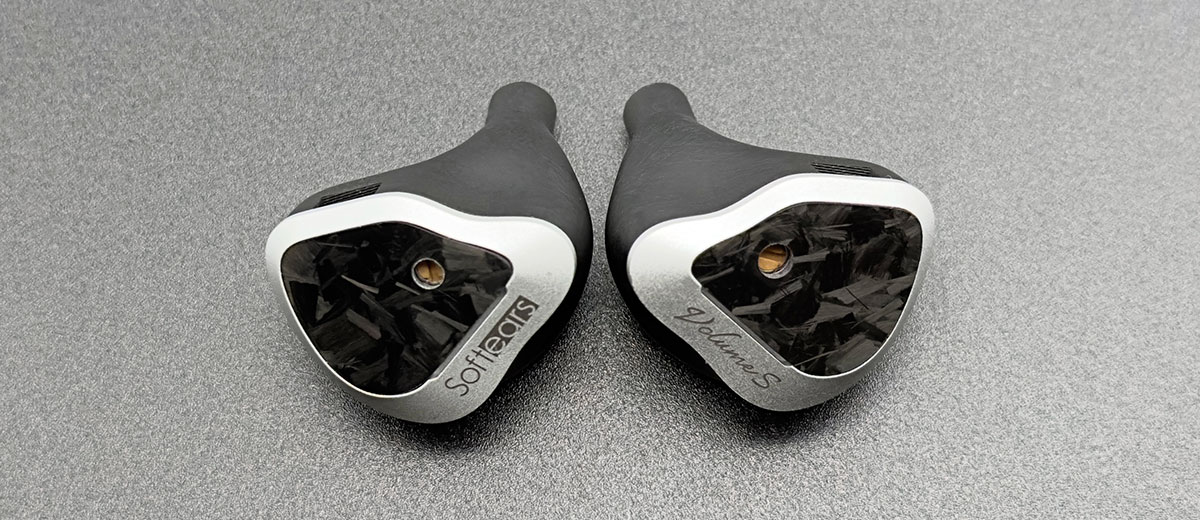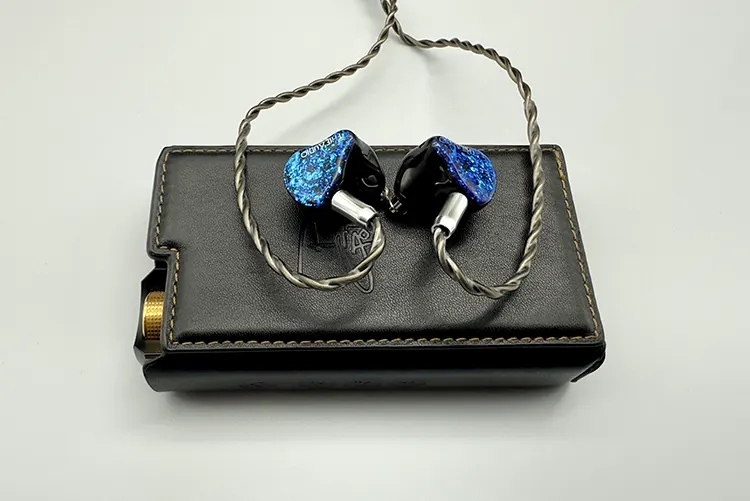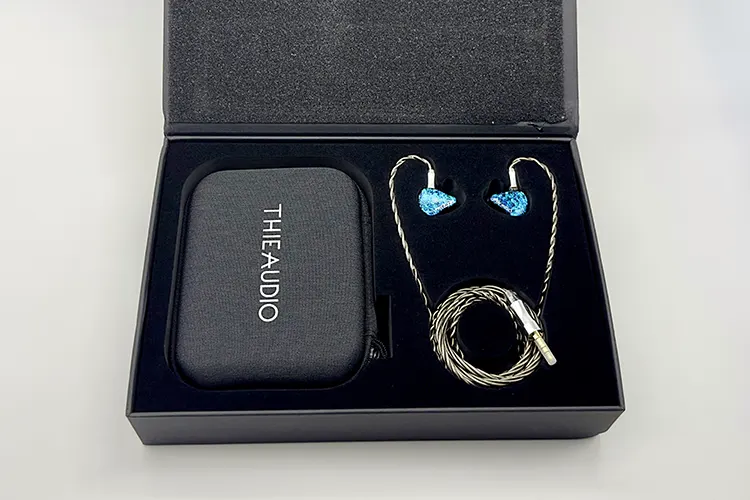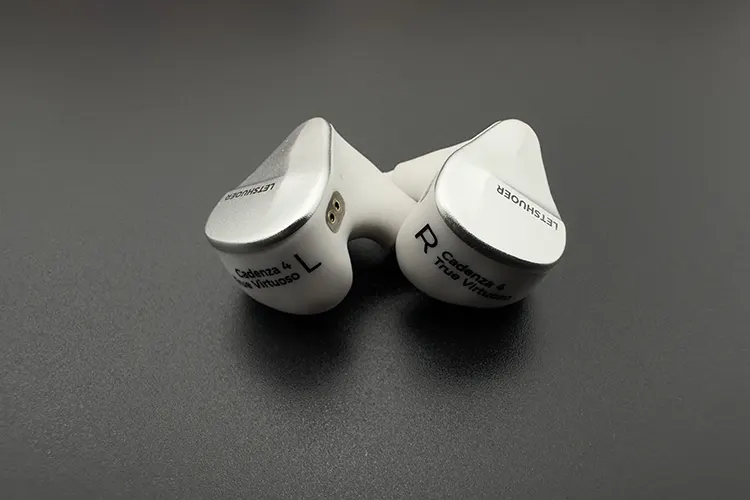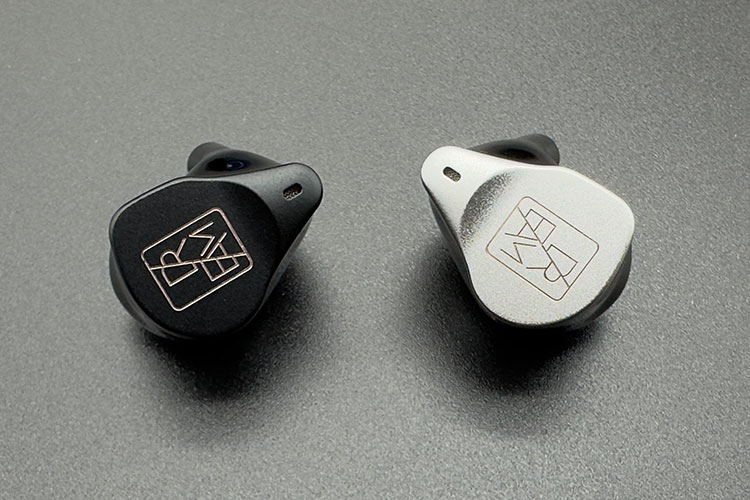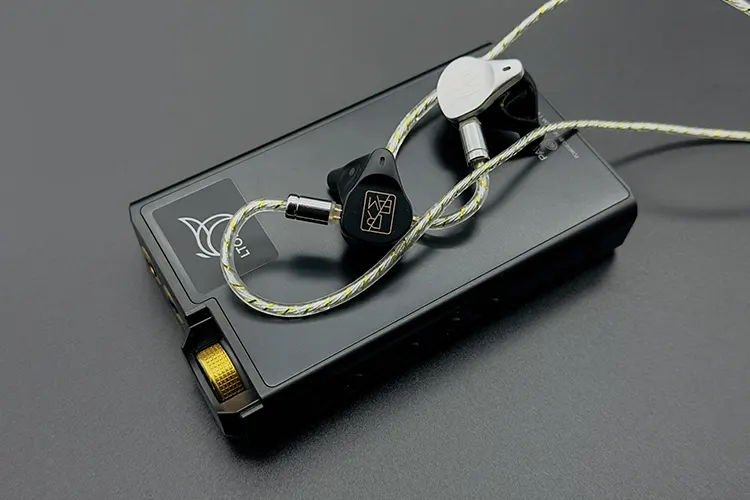Synergy
In low-impedance mode, the Volume S has an impedance of 9.8Ω @ 1 kHz and a sensitivity rating of 124 dB/Vrms. In high-impedance mode, the impedance increases to 31.2Ω @ 1 kHz with a sensitivity rating of 114 dB/Vrms. In both modes, the IEM does not require much power.
In low-impedance mode, it reaches a comfortable listening level at around 30 on my LPGT, whereas the high-impedance mode requires a volume level closer to 40.
The low-impedance mode is particularly easy to drive, making it compatible with less powerful sources such as dongles and smartphones.
In this mode, the IEM pairs well with neutral to warmish sources. The Lotoo PAW Gold Touch, for instance, complements it nicely, delivering well-controlled bass and a midrange with rich tonality.
Resolution and detail retrieval are well presented. However, the soundstage is not particularly expansive, with limited width and above-average depth.
When paired with the Questyle CMA18 P, a more powerful source, the bass quantity noticeably increases, likely due to the improved dynamics from the additional power. The sound also becomes more open, and the soundstage gains slight width compared to the LPGT pairing.
In high-impedance mode, the IEM demands more power and exhibits better scaling. With extra power, the sound opens up further.
Since this mode has a brighter tuning, it pairs better with warmer sources. However, even with the LPGT, the sound remains noticeably thinner and does not offer many positives to highlight.
Select Comparisons
THIEAUDIO Hype 4
Technical
The THIEAUDIO Hype 4 is a hybrid IEM that features dual dynamic drivers and four Sonion balanced armature drivers. It incorporates the IMPACT2 technology that is common in the Hype series IEMs, Monarch MKIII, and Oracle MKIII.
Hype 4 has an impedance of 17Ω @ 1 kHz and a sensitivity rating of 105 db/Vrms. The IEM can be easily driven by sources with less power, such as dongles and smartphones. It doesn’t require a lot of power to sound adequately. On my LPGT, Hype 4 takes a few volume levels more than the Volume S.
Design
Hype 4 comes with black shells and artistic, shiny faceplates. It also comes in two more options, white and blue. The white variant has a pearly body, while the black and white options differ mainly in their faceplate patterns, and their shells are black.
When it comes to build quality, both IEMs feature similar resin shells, with the Hype 4 having slightly smaller shells. The build quality of Volume S is better.
Owing to its smaller size, the Hype 4 has an easier fit, but the Volume S is as comfortable due to its lightweight and ergonomic design. The nozzles on Hype 4 are smaller in comparison.
Both the IEMs use a 0.78mm 2-pin connector, but the Volume S offers a modular cable with interchangeable terminations, including 4.4mm and 3.5mm. I prefer the cable on Volume S.
As for accessories, Volume S has more thoughtful inclusions. The notable differences are the modular cable and better ear tips included with the Volume S.
Performance
The tuning of the Volume S (low-impedance mode) is quite similar to that of the Hype 4 in the way both have a balanced tuning with some bass boost and a warm-neutral midrange, though the Hype 4 delivers a more refined sound.
Starting with the bass, I find the Volume S more enjoyable due to its stronger mid-bass punch. The bass feels more impactful and better controlled. While the Hype 4 offers more refinement and detail in the bass, I prefer the added punch. However, the Hype 4 has better sub-bass depth.
In the midrange, the Hype 4 provides a richer and more detailed sound. Both IEMs maintain a natural and realistic timbre. The Volume S has a fuller lower midrange, adding more body to the sound.
In the upper midrange, the Hype 4 extends better. Male vocals are more enjoyable on the Volume S due to their density and weight, while female vocals sound sweeter and more extended on the Hype 4.
The treble is significantly better on the Hype 4. It is airier and brings out finer details that may feel less pronounced on the Volume S. Additionally, the Hype 4 provides a greater sense of openness.
In terms of technical performance, the Hype 4 has the edge, though the Volume S is not far behind. The soundstage width and depth are quite similar, with the Hype 4 having a slight advantage.
Imaging is more precise on Hype 4, improving spatial accuracy. It is also slightly more resolving, while some finer details on the Volume S may not be as accurate or precise.
LETSHUOER Candeza4
Technical
The Cadenza4 is a hybrid universal in-ear monitor using a 10mm dual-chambered beryllium-coated dynamic driver and 3 BA drivers. With Cadenza4, you get a mix of BA drivers, 1 from Sonion and 2 from Knowles.
The Cadenza4 has an impedance of 15Ω @ 1 kHz and a sensitivity rating of 102 dB/Vrms. The Volume S, in its low-impedance mode, is easier to drive than the Cadenza4. One of the good aspects of Candeza4 is its ability to scale up with extra power.
Design
The shells of the Cadenza4 are built in 3D-printed resin with a standard-sized nozzle extension. The faceplate is built in CNC-machined aluminum alloy and is colored shiny silver.
The shells of Candeza4 are smaller in size. The shells on both the IEMs are lightweight, well built, and have ergonomic designs, which gives them an easy fit.
Cadezna4 connects with a 0.78mm 2-pin connector. As with the Volume S, we get a modular cable with multiple connectivity options of 4.4mm and 3.5mm.
While the packaging of Cadenza4 is impressive, the Volume S boasts a better inclusion of accessories.
Performance
Cadenza4 is one of my favorite sub-$ 300 IEMs. Similar to the Volume S, it has a balanced and smooth profile with a nice warmth in the midrange. In short, I found the Volume S to be a more refined version of the Cadenza4.
The Volume S has more bass quantity due to its more impactful mid-bass. The sub-bass remains equally deep and exhibits a similar quantity, but Volume S offers more detail and better texture. This makes the bass more enjoyable compared to the relatively leaner bass profile of the Cadenza4.
In the midrange, both IEMs offer a rich and lush sound. The lower midrange has better body on the Volume S due to the stronger bass shelf, while the upper midrange is quite similar in presentation.
Female vocals are equally sweet on both IEMs. The midrange is more detailed and cleaner on the Volume S.
Moving from the upper midrange to the higher frequencies, the Volume S carries more energy and has better extension. It sounds more open and airier, whereas the treble on the Cadenza4 is smoother and feels slightly muted in comparison. While both IEMs present details well, Volume S does a better job in the treble region.
Comparing the technical performance, I find the Volume S slightly ahead of the Cadenza4 due to its better stage presentation and imaging.
The spatial accuracy is better portrayed on the Volume S. Thanks to its wider stage and improved layering, it handles complex tracks more effectively. It is also slightly more resolving than the Cadenza4.
SIMGOT EM10
Technical
The SIMGOT EM10 is a flagship IEM from the house of SIMGOT. The EM10 features a combination of one dynamic driver, eight balanced armature drivers, and one piezoelectric ceramic driver.
The 8mm dynamic driver is employed to handle the low frequencies, while the balanced armature drivers and piezoelectric driver handle the mid, high, and ultra-high frequencies.
SIMGOT EM10 has an impedance of 41.6Ω @ 1 kHz and a sensitivity rating of 120 dB/Vrms. Though it is easy to drive the IEM, the sound gets better and more spacious with amplification. In the low-impedance mode, the Volume S is easier to drive.
Design
EM10 is built of resin shells but does not feel as robust as the Volume S. The shells on the EM10 are shiny black in color with different colors of faceplates, with one side sporting a silver faceplate and the other a matte black finish.
The shells are smaller in size compared to the Volume S. The weight of both IEMs is nearly the same, and they have similar levels of comfort.
Though not as well-accessorized, the EM10 offers a better unboxing experience and a decent set of accessories. The EM10 opts for a modular option with both 3.5mm and 4.4mm terminations.
Performance
To start with, both the IEMs offer a warm tuning with a good emphasis on bass. In the bass region, the EM10 offers better sub-bass depth, while the Volume S excels in the mid-bass.
Overall, the bass is more enjoyable on the Volume S due to its balanced bass range. Both IEMs deliver detailed and well-textured bass, though the EM10 has a slight edge in bass detail.
In the midrange, both IEMs have a nearly similar presentation with a decent dose of warmth and a natural, realistic tonality. The EM10 is slightly more resolving and has a cleaner midrange, but the difference is subtle.
The lower midrange is leaner on the EM10, whereas it feels thicker and denser on the Volume S. In the upper midrange, the EM10 carries more energy and is better extended.
Both IEMs maintain a smooth and inoffensive upper-frequency range, but the EM10 has a more incisive and crunchier treble profile. It also sounds a bit more open and airy in comparison.
Treble notes are better separated and more detailed on the EM10, whereas the Volume S feels slightly lacking in treble detail and extension.
The EM10 has a better soundstage presentation, offering slightly more width and depth. Imaging is similar on both, though the EM10 provides more accurate positioning. Microdetails are handled better on the EM10, making it a bit more refined.
However, both IEMs have a similar level of instrument separation and layering capabilities. Overall, I found it difficult to determine which one I preferred more.
My Verdict
When it was released, the Softears Volume S generated a lot of anticipation. I was eager to try the IEM myself to see what all the buzz was about.
To be honest, it did not disappoint me. It lives up to expectations and maintains the brand’s reputation. While no IEM is perfect, the Volume S, despite its drawbacks, offers a well-executed tuning that will appeal to many listeners.
For someone looking for a balanced sound signature with solid bass, sweet midrange, and an inoffensive upper frequency, the Volume S is a no-brainer. The balance has been nailed, flawlessly!
As for its flaws, I don’t see the point of the high-impedance mode as it doesn’t offer any real advantage over the low-impedance mode. The midrange could be slightly more resolving and carrying more energy, but that ultimately comes down to personal preference. I find the midrange fairly rich and detailed.
In the highly competitive $300 market, the Volume S stands out due to its tuning and overall packaging. It gets an easy recommendation from me.
Softears Volume S Specifications
- Driver Configurations: 10mm Dynamic Driver + 2 Balanced Armatures + 6mm Passive Radiator
- Frequency Range: 8 Hz – 40 kHz
- Impedance: High: 31.2Ω, Low: 9.8Ω
- Sensitivity: High: 114 dB @ 1 kHz, Low: 124 dB @ 1 kHz
- Crossover: 3-way
- Cable: Oxygen-free Copper cable, detachable 0.78mm 2 Pin
- Modular Termination: 3.5mm and 4.4mm interchangeable plugs

